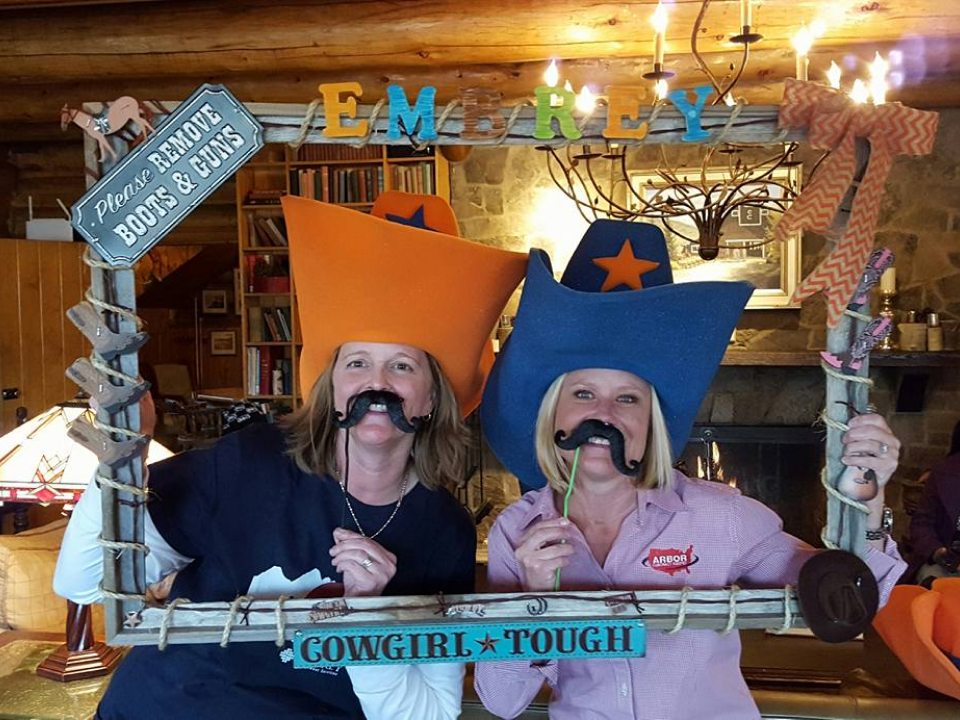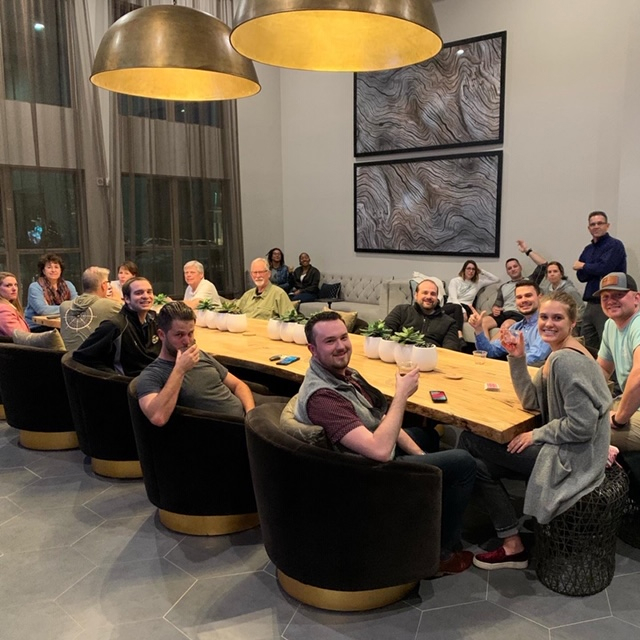The Missing Piece of Standard Operating Procedures
Brenda Cones Senior Director of Systems & Operations, Embrey PartnersTurning policy into practice.
“I know the answer to this question.” Whether they’re brand new hires or long-time staff, that’s exactly what we want our employees to feel when they confront any kind of challenging task at Embrey. Naturally, getting to a sound solution might require a little outside help from time to time. Enter: standard operating procedures.
When I returned to Embrey after a few years away, I was suddenly in control of our massive online policy manual — standard operating procedures (SOP’s) spelling out best practices for every role. I was confident I could help shape this SOP into a major asset for our team members. I sensed right from the beginning that if we made it a living, breathing document, one employees of all levels could suggest edits to, the SOP could boost employees’ confidence in the face of any problem.
“if we made it a living, breathing document, one employees of all levels could suggest edits to, the SOP could boost employees’ confidence...”
SOP’s, after all, are far from static documents. Whether the topic is mold best practices or fair housing laws, these guidelines can change in dramatic ways — on a weekly basis. That’s why, in addition to the newsletters and other resources I pour through regularly to update these rules, it’s critical that the employees who rely on evolving SOP chapters feel comfortable pitching updates to them.
Unfortunately, there’s often a roadblock in team members’ way: the fear of asking questions to a support team, let alone their own managers, when what they’re really feeling is: “how do I answer this question?” In my view, it’s precisely, this “oh, I better not bother you, you must be busy” sentiment that we should all work to change in multifamily.
To this end, I’m excited to share communication strategies operators can leverage to make their policy guides actually matter. I’ll break down how they can create the kind of work culture where employees speak up and solve problems, collaboratively — whether they’re updating policies or tackling other industry challenges.
Unraveling the question roadblock.
Why is there a widespread fear of asking questions in multifamily? To me, it stems from the fact that people often get into this industry through word of mouth. Some enter with college degrees, some don’t. Success usually comes down to gaining on-the job experience — and that often means starting in the dark and figuring out your own way forward.
Sadly, starting off on such shaky ground prompts some entry-level employees to worry too much about rocking the boat with management. Maybe they don’t want to look ill-prepared for their role; maybe they imagine managers are constantly busy. Alternatively, maybe they’ve turned to the SOP first but aren’t sure they have the authority to act on something.
Facing uncertainty and feeling too fearful to ask for help, a fair number of new hires will unfortunately go down the wrong path on an assignment. Ironically, making a mistake this way means they have to face their manager anyway — and in a less positive circumstance than if they had simply spoken up in the first place.
With this backdrop in mind, multifamily leaders would do well to reconsider their roles in the industry, to operate in such a way that their direct reports feel empowered to ask for help — and to help others — by updating standard operating procedures. Here’s how multifamily companies can effect that change.
Customer service from the c-suite.
 In my view, leaders exist to serve. If that sounds counterintuitive, think about it this way: executives would not be executives if there was no one working below them. In that sense, it’s my opinion that leaders are meant to serve those on their teams, to share knowledge with employees who lack familiarity with their industry and its intricacies.
In my view, leaders exist to serve. If that sounds counterintuitive, think about it this way: executives would not be executives if there was no one working below them. In that sense, it’s my opinion that leaders are meant to serve those on their teams, to share knowledge with employees who lack familiarity with their industry and its intricacies.

I’ve seen firsthand that the healthiest multifamily cultures entail an aspect of customer service coming straight from the c-suite. As so many of us in multifamily work our way up from leasing agent to regional and beyond, I find that the secret to empathizing is to simply look back on your own career and remember how challenging life could be at the on-site level.
I started out as a leasing agent in multifamily, and I still haven’t forgotten all of the pressures involved in that role. These days, new leasing employees handle legal paperwork and so many technical systems, too. It’s why, at the leadership level, I now find it really valuable to use humor to make people not frightened of me. By having a sense of play and bringing some warmth into a room or meeting, I try to make clear: “I’m a genuine person, and I’m here to help you.”
“...the secret to empathizing is to simply look back on your own career and remember how challenging life could be at the on-site level.”
Put simply, the policy manual shouldn’t be a burden and neither should corporate leadership; Neither of these factors should be the cause if an on-site person has a bad day on the job. Naturally, it’s not easy to change course when the status quo seems especially comfortable. So, I’m happy to share a few key ways multifamily companies can train and champion their managers to reconsider their roles. By offering senior employees opportunities for healthy debate and offsite mingling, multifamily companies can provide a valuable model for these leaders to use with their direct reports, too.
Meaningful discussions, lively meetups.
We all know how it feels to be sucked into a meeting that feels like a massive waste of time. That’s why Embrey works hard to go against the grain and strategically approach meeting timing and headcount. To that end, we ensure our community managers have a chance to meet together in small groups so topics important to them are represented in the quarterly meeting with the most senior managers.
Under this approach, we find regionals can really hash out the topics with their community managers that matter most to them — before deciding how to phrase or frame these issues to upper management. We find it’s incredibly valuable for them to have this kind of open dialogue, as well as the agency to decide how and when to keep senior leadership in the loop on problems they’re sorting out as a group.


However, we also find that getting community managers out of the office can do wonders, too, for their ability to solve problems collaboratively. We think powerful things can happen when co-workers have the chance to sit around a fire pit or mingle around a pool and pose the question: “you know what sucks?”
Companies in all industries often say they can’t afford a retreat, but it can really just be a night out bowling to get people comfortable enough to discuss tough topics. Something changes when people are in jeans, just chatting with each other. They suddenly talk openly about what could be better, what could be easier than everyday. When senior managers are part of the party, too, we can learn about their progress on issues and speak a lot more comfortably about any roadblocks that might be in the way.
I also find that a warm environment and public recognition go a long way toward changing the way community managers lead their own staff, post-meeting or retreat.
Playful humor, public recognition.
Just as I work hard to make entry-level employees comfortable asking my support team questions, I like to establish a somewhat playful dynamic with regionals, too. I’m not above saying something like: “I got a tear in my eye last week when [your employee] Dustin said: ‘I read the standard operating procedure, and I saw this one thing! Can you help me understand what it means?’”
That’s my way of letting a regional know, through a public shoutout, that I’m proud of them for empowering their staff to speak up and have the instinct to edit the SOP for others. I think it’s so important to recognize regionals when their team did something noteworthy or collaborative.
People forget that regionals are dealing with 5-12 properties. So, we try our best to communicate: “keep up the good work — and help us help your teams by spreading the word about the SOP.”
In the end, when you do an audit, you realize it’s the teams who speak up, who review, who edit the SOP — those are the teams winning big on resident retention, property compliance, and other success areas in multifamily. Once you’ve done this most difficult part — the culture piece of operating procedures — choosing a delivery method is a breeze.
Keeping people in the loop.
First, I think it’s useful to relate the delivery options I didn’t choose — and why. At Embrey, our SOP system has the ability to send users an immediate notification to the inboxes when updates have been made. It can also push to a dashboard notification. When users log in to the SOP manual, they can see the change updated on that dashboard.
However, I don’t use either option, because our standard operating procedure manual is not based on every user login. So, an email connection wouldn’t be effective. We also don’t want people to have to remember yet another password. Thus, I came up with our “What’s New Wednesday” newsletter.
It’s branded with the same artwork every week and stands out in an inbox. The idea is that I gather any policy updates that fall between Thursday and Tuesday and note them in a quick bullet-point style email each Wednesday. Importantly, I only send these to the relevant departments. Our maintenance technicians are busy enough, so I don’t see the value in bothering them about an update that doesn’t affect their day-to-day. Finally, why Wednesdays? I had the feeling people are still sorting through their workload until that point in the week.
Whichever system you put in place, you’ll find all the hard work of transforming your teams, of discovering that missing piece of SOP’s, pays off when you reap benefits like these...
Reaping the benefits.
Above all, the most rewarding part of my job is when I see someone is comfortable enough to email a revision to the SOP. When they feel our support and Ops teams are approachable enough that they can make a necessary update, we’ve done our jobs right.
 When you build an environment where new hires feel comfortable speaking up, your odds of turnover really start to dwindle. At the end of the day, a new hire can’t make a difference at a company if they’re too scared to share something — they’ll just quit. It’s why Embrey works so hard to be customer service oriented to our own staff. We want people to feel they can be brave and reach out with a need and that we’ll respond positively.
When you build an environment where new hires feel comfortable speaking up, your odds of turnover really start to dwindle. At the end of the day, a new hire can’t make a difference at a company if they’re too scared to share something — they’ll just quit. It’s why Embrey works so hard to be customer service oriented to our own staff. We want people to feel they can be brave and reach out with a need and that we’ll respond positively.
Part of the reason I’m so passionate about this culture piece is that I genuinely feel grateful for this industry. I’m thankful for the person who told me to go into this field so many years ago.
Having that grateful heart — and remembering where you came from — is so important when you go into management.

Looking today at on-site people, it’s incredible to see what they pull off. We didn’t face the same ‘I want it now’ attitude customers have today. So, I’m appreciative that our on-site people are there every day, trying to please 100% of the people 100% of the time. Every multifamily company is trying to rent four walls with a roof and carpet, so the competitive advantage becomes: what can you do to support your team so that they have the edge?
Podcasts Episodes from Brenda Cones
Brenda Cones: Making Standard Operating Procedures Matter
How do you build a work culture where multifamily standard operating procedures truly matter? Where new employees feel comfortable speaking up to make edits and teams collaborate to shape policy for the better? Brenda Cones, Senior Director of Systems & Operations at Embrey Partners, shares her voice on why it starts with work culture.
Episode Page